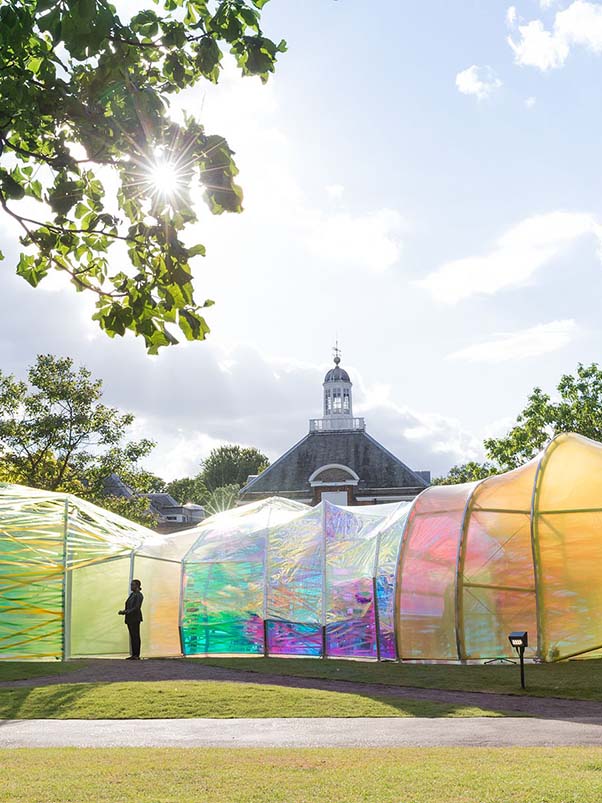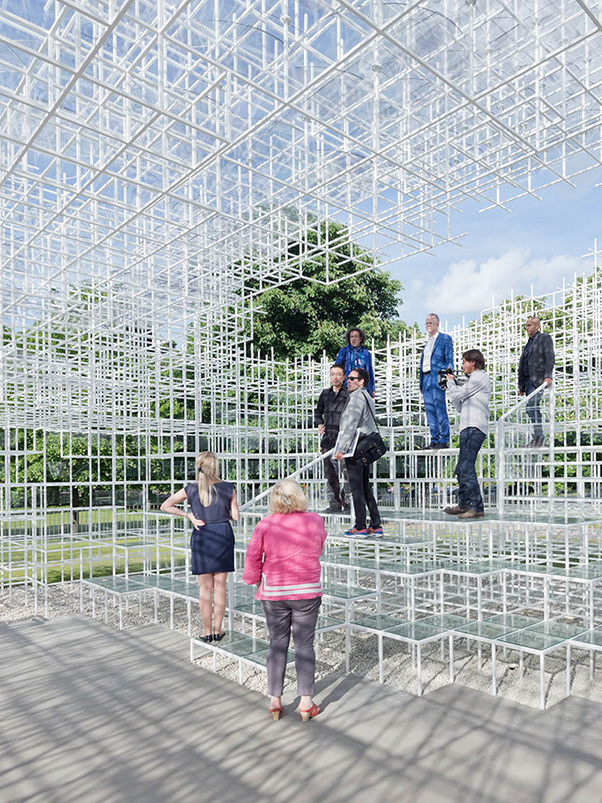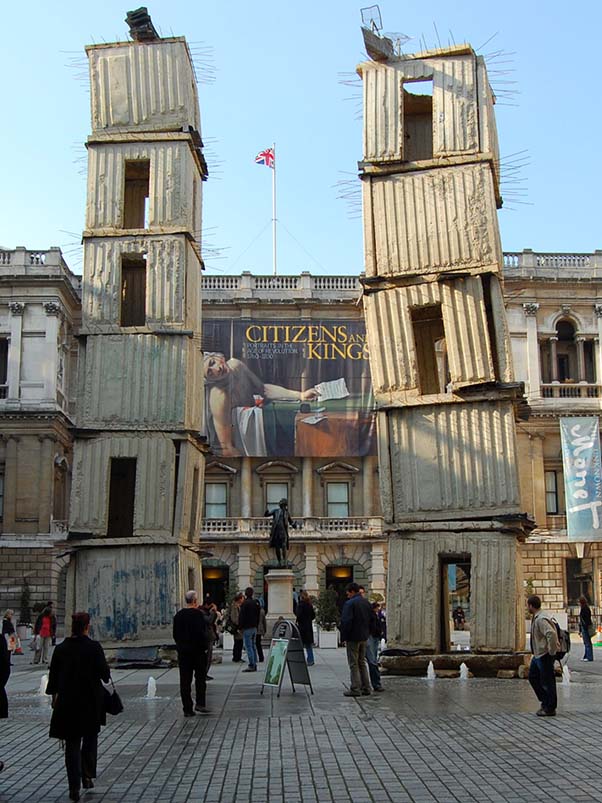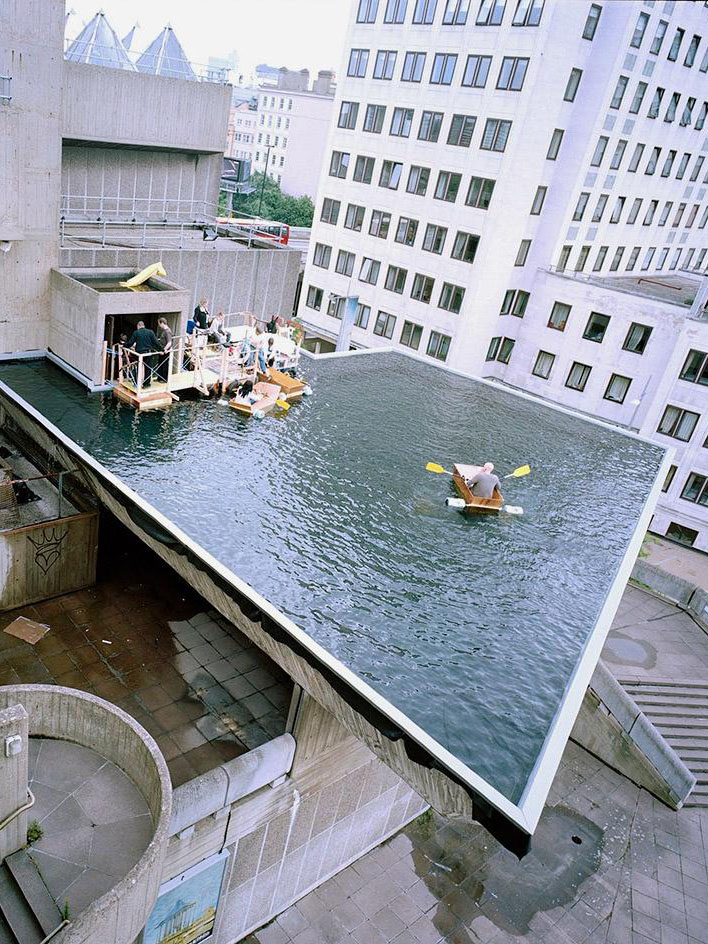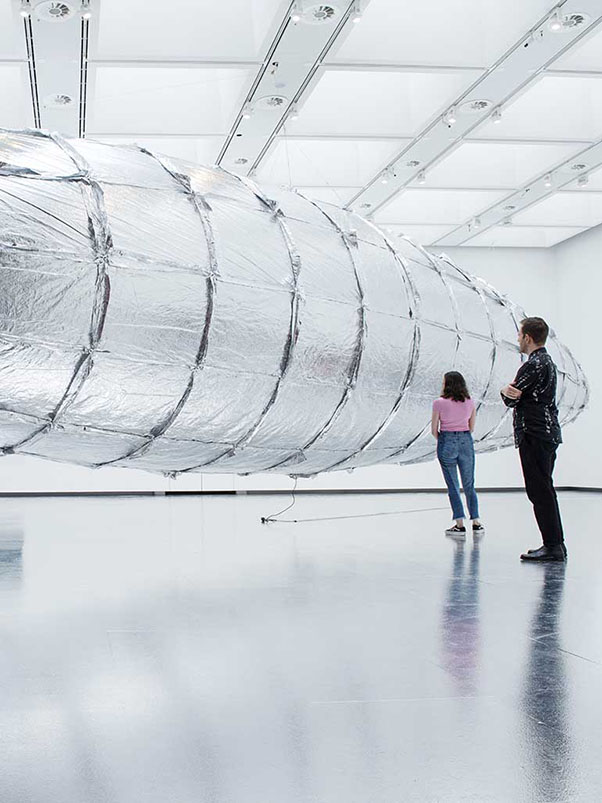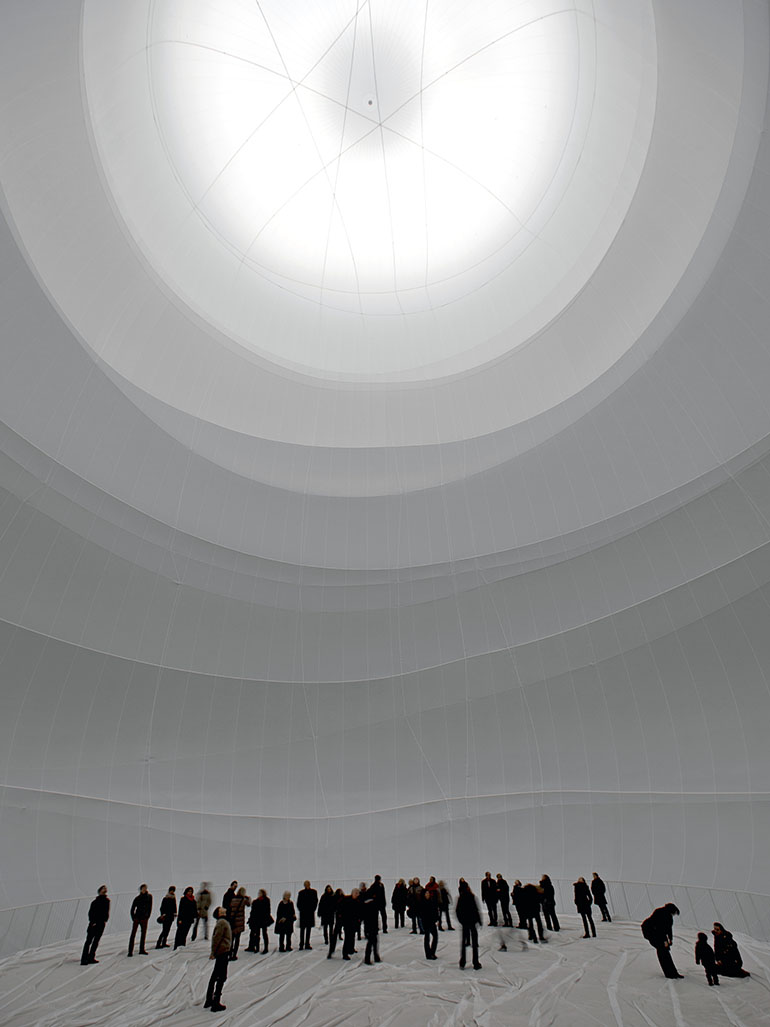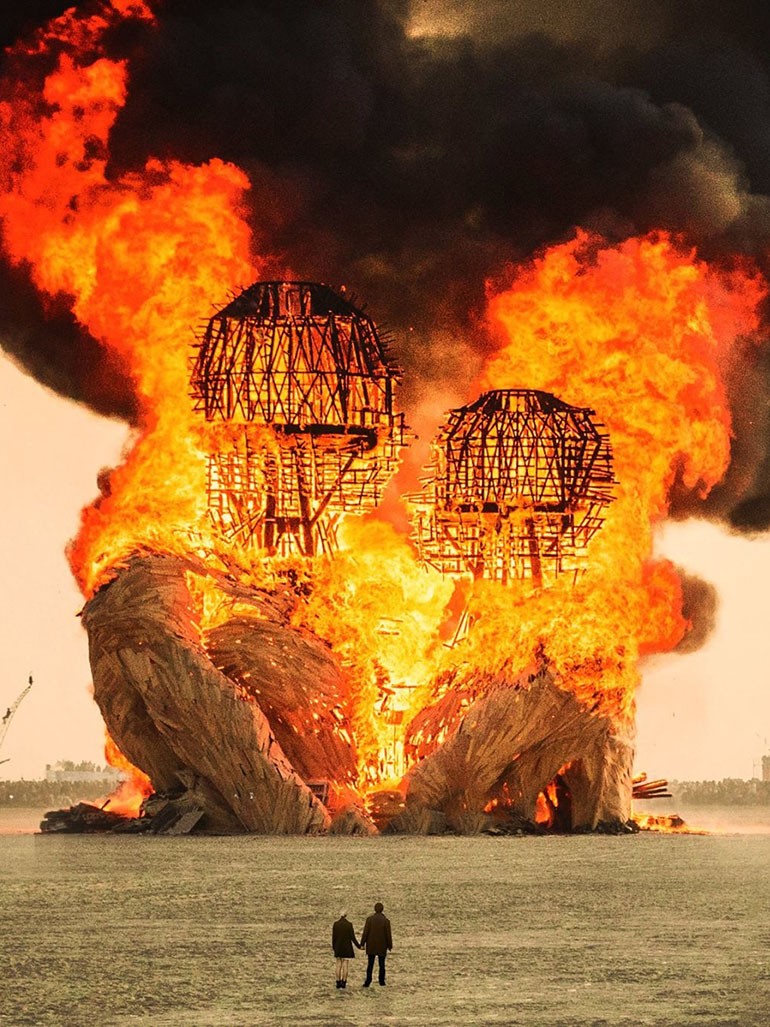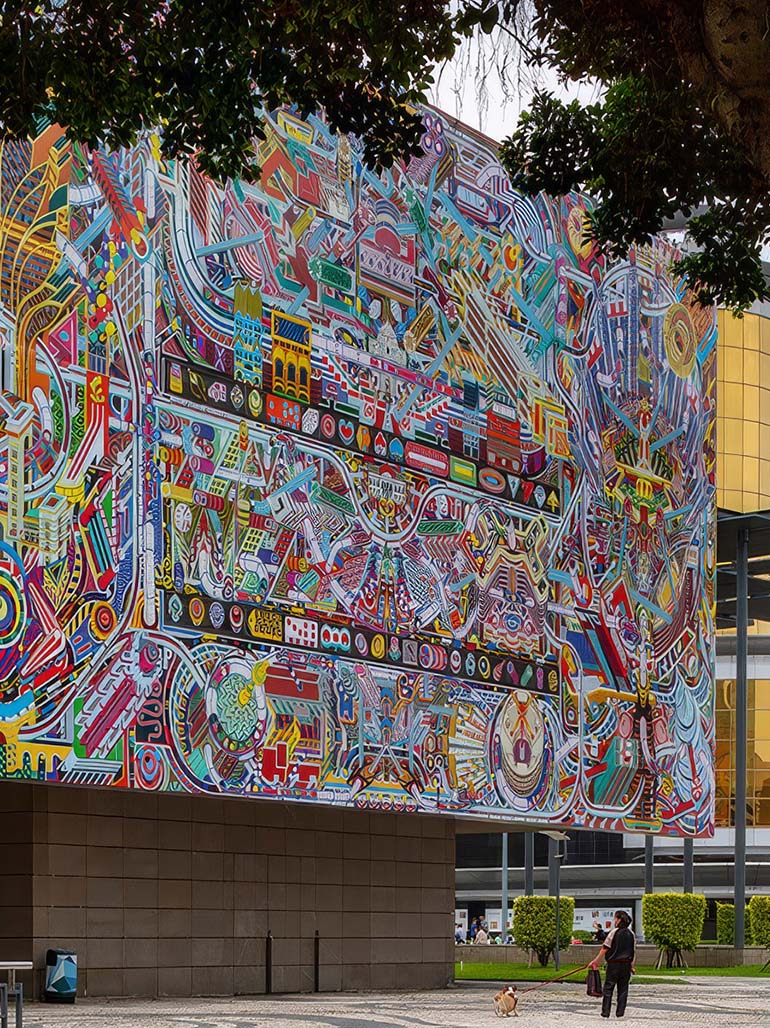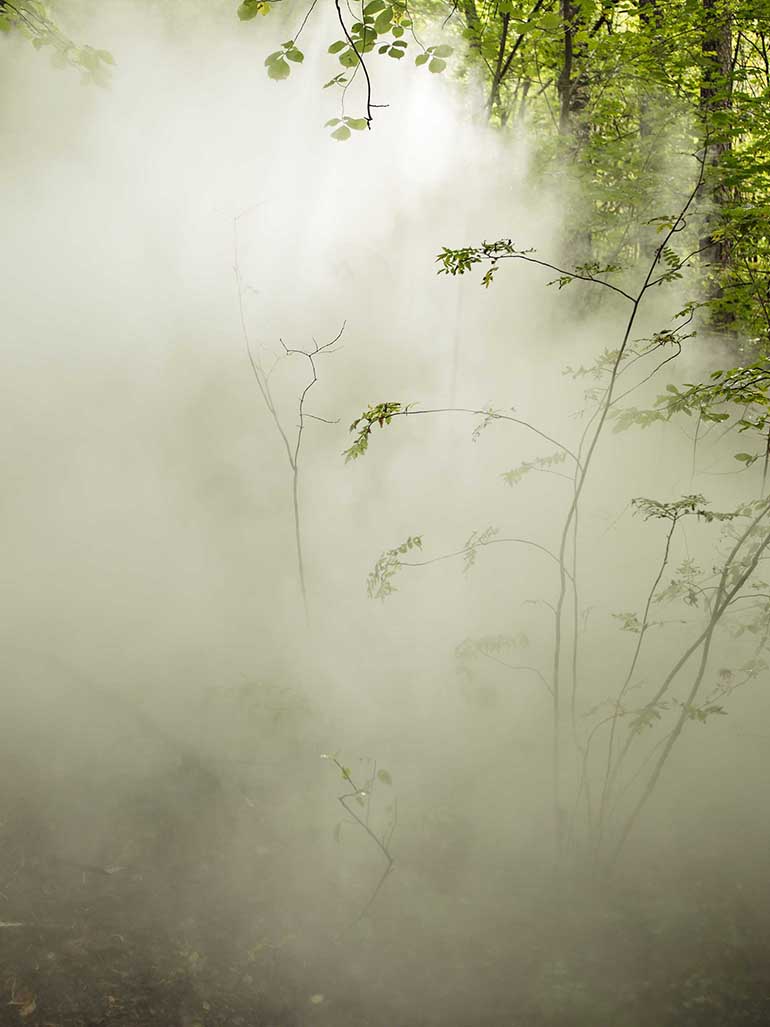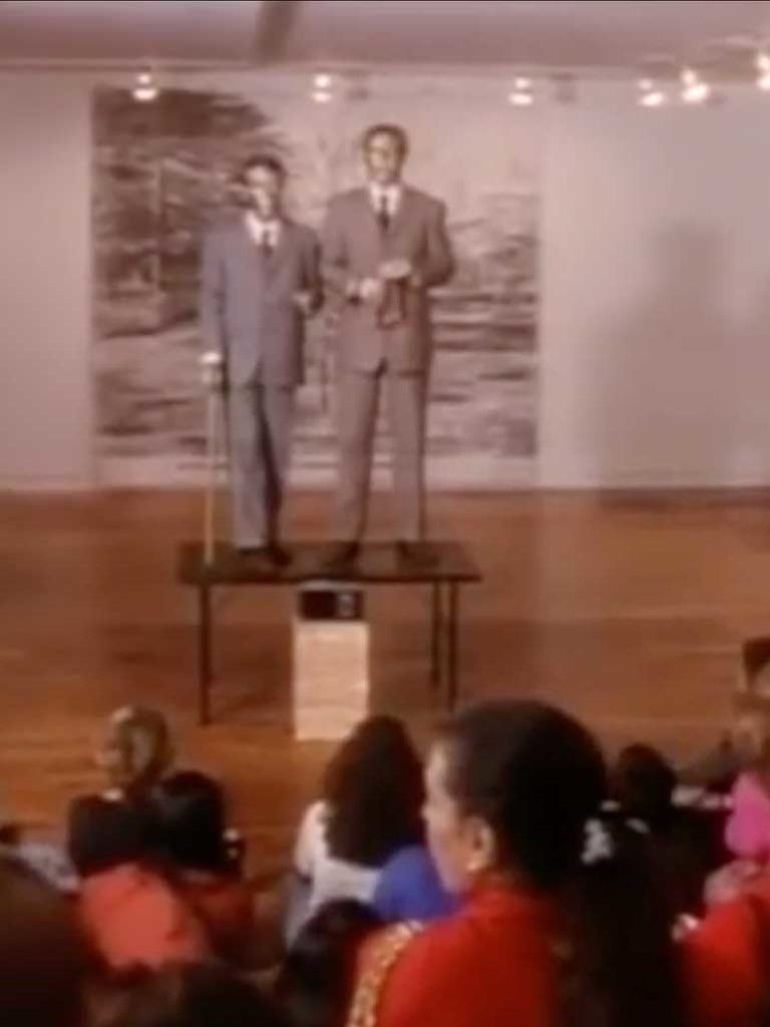
Mastaba in Abu Dhabi
Christo’s first permanent large-scale work 1, The Mastaba, would have been the world’s largest sculpture and installed 160km south of the city of Abu Dhabi. The planning of this enormous installation began in 1977. It was originally conceived as a sculpture for the desert 2 in Abu Dhabi.
Christo and his wife and long-term partner Jeanne-Claude drew inspiration from ancient Egypt. They planned to use 410.000 multi-colored barrels to form a mosaic of bright colors, echoing Islamic architecture.
Its shape and name are based on the ancient Egyptian tomb known as the Mastaba – a rectangular-based, trimmed variation of a pyramid. As a sculpture, the Mastaba is monumental. Its shape would have been familiar to the people of the region, yet creating a massive work larger than any pyramid.
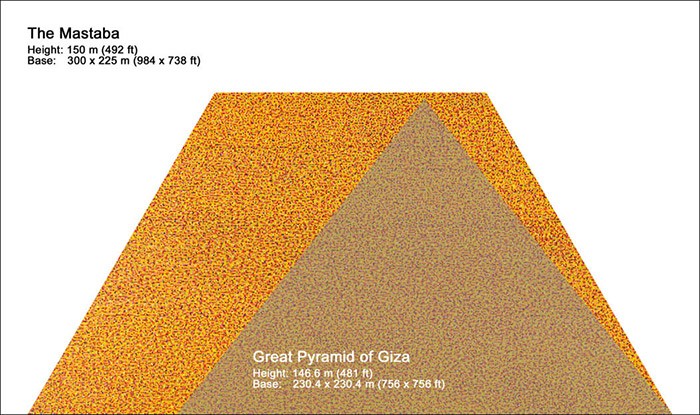
Christo planned to take about 30 months of construction work to create the 150m high, 225m, and 300m wide sculpture. The top of The Mastaba would have been a horizontal surface 127m wide and 225m deep. Through a long planning period, it would have been possible to raise the entire structure on rails to its final position in about 3 to 4 days. The estimated cost was 340.000.000US$.
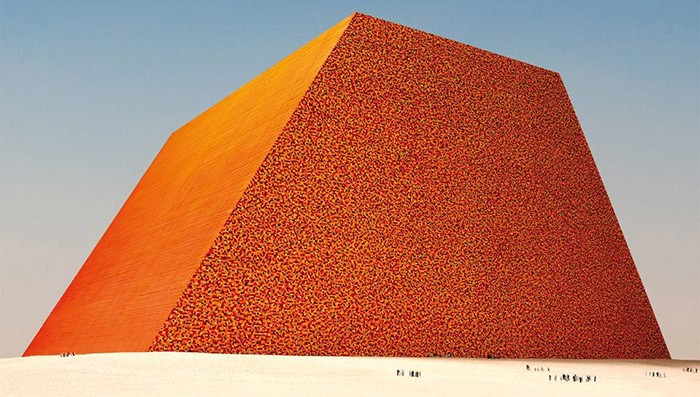
Before his death, the artist still harbored the aspirations to build the original design in Abu Dhabi.

Mastaba in London
If you have recently been to Hyde Park in London, you have likely seen this trapezoidal shape spectacle that rises high above the tree canopy and dwarfs the pedal boats that bow aimlessly in the artificial lake Serpentine.
Made of 7,506 multi-colored empty oil barrels, the London Mastaba is the latest and last work by imaginative land artist Christo. It is also his first monumental piece in the United Kingdom and just as unignorably as his other achievements. Floating on the artificial lake, the installation weighs 600 tons. The London Mastaba is a compressed version of the original concept.
Construction of the London Mastaba
Christo, throughout his artistic career, along with his wife, never accepted sponsorship from organizations or public funding because they never wanted the gesture to compromise with their vision. For this reason, he had to raise funds through the selling of his original pieces of art, through which he raised around $4 million.
The London Mastaba took around two and a half years to construct. Unlike other projects, it didn’t take too long because it did not face as many bureaucratic obstacles. However, it still required painstaking planning, some teamwork, and engineering.
According to the New York Times, it took around a year for Christo and his team to secure appropriate permits for the erection of the piece. The materials were delivered by over 70 trucks, required to drive at just a mile per hour through the park to protect the people. For a project like this, it had to pass through many restrictions, especially safety and environmental.
So, the materials used had to be certified as having a minimal environmental impact on preserving the ecosystem of the artificial lake. There was also a need for machinery, such as scaffolding, which was rented and returned. At the same time, other materials were removed and recycled in the United Kingdom once the project was completed.
Speaking during the construction, Christo said 34:
For three months, The London Mastaba will be a part of Hyde Park’s environment in the center of London. The colors will transform with the changes in the light and its reflection on the Serpent Lake will be like an abstract painting.
It is interesting to note that all of Christo’s projects were created with recyclable materials, free from any official or state intervention. The site returned to normal after the deconstruction of the sculpture. As for the London Mastaba, the artist rented the waters of the Serpentine Lake from The Royal Parks and contributed to the grounds’ maintenance.
Serpentine Galleries
Hans Ulrich Obrist, artistic director at Serpentine Galleries 5, had the idea of working with Christo after seeing one of his projects, Floating Piers, back in 2016. Speaking about finally working with the artist, Obrist said, “It is our dream come true to have Christo with us.”
Obrist, along with Serpentine Galleries CEO Yana Peel, was present during the inauguration of the installation, together with Michaele Bloomberg, chairman and former New York mayor, who happened to work with Christo for the iconic Gates installation in New York’s Central Park.
The work’s christening coincided with a show at the gallery dedicated to Christo and his wife Jeanne-Claude and their decades’ history of working with oil barrels. The exhibition was titled Christo and Jeanne-Claude: Barrels and Mastaba (1958-2018) and featured historic photographs of various installations, sculptures, and preparatory sketches.
The exhibition explored some of the two artists’ legendary works as well as some notable interventions like the Wall of Barrels- Iron Curtain in 1961-1962, which Christo and Jeanne-Claude erected for a few hours in a Paris street in response to the construction of the Berlin Wall.
The show also featured some of the unrealized suggestions for barrels projects, including those in Lake Michigan and the Suez Canal, both conceived in 1967. The show ran from June to September 2018, shortly before the destruction of the Mastaba on September 23.
Texas Mastaba
Housed in the University of Houston’s University Computing Center, Christo’s Texas Mastaba is a lithograph and silkscreen 6 with collage features. It resembles the ancient Egyptian mastabas or flat-roofed rectangular tombs made from stacked barrels and was one of the earliest pieces of work inspired by these prehistoric buildings.
The idea for this sculpture was conceived in the late 1960s along the Gulf Freeway between Galveston and Houston. It would have been the artist’s first publicly scaled installation and the only permanent piece ever created by the artist in Texas together with Jeanne-Claude, his partner in art and life who died in 2009.
But after plans failed in Houston, the artist spent almost half a century looking for an alternative site that eluded him, including Rome 7, Otterlo (in Holland), Kassel 8, and Abu Dhabi, before eventually realizing small-scaled mastabas in London (2018) and at Saint-Paul-de-Vence (2016).
The piece was acquired in 1981 by the Public Art UHS as part of a portfolio of works by famous artists known as America: The Third Century to commemorate the United States Bicentennial.
Maria C. Gaztambide, director and chief curator of Public Art of University of Houston System, says 910:
The print is a fairly insignificant object within Christo’s storied oeuvre, yet it carries tremendous symbolic weight as a stand-in for one of his most ambitious projects.
About Christo & Jeanne-Claude
Christo and his late wife were interestingly born on the same day, on June 13, 1935, but in different countries – Gabrovo, Bulgaria and Morocco. His mother worked as a secretary at the Academy of Fine Arts in Bulgaria’s capital Sophia, where she enrolled Christo in private art lessons.
He later moved to Paris due to the severe living conditions under Stalin. Compared to the austerity and obscurantism of communist Bulgaria, the Parisian art industry was “profligate” to Christo. His focus on form, combatively rigorous approach towards production, and public interaction, can be seen as a deliberate reaction.
Christo and Jeanne-Claude met in Paris in 1961. They immediately began their lifelong collaboration until her demise on November 18, 2009. They spent more than 50 years repeatedly redefining the aspects of installation and landscape art, creating pieces that flout categorization and recognize no boundary to possibility.
However, most of their projects were large and colorful. They used cheap, day-to-day materials such as plastic, fabric, tape, and barrels.
Christo had aspirations of accomplishing their grand Mastaba idea in a desert in Abu Dhabi, but as fate would have it, he also died before realizing that dream on May 31, 2020, aged 84, at his home in New York City.
Speaking in an interview with The Art Newspaper 1112, Christo said:
My projects are about the real things. The real wind. The real wet. The real dry. The real things. Not photographs. I don’t know how to use a computer. Not flat surface. Not propaganda. But the real things.
The meaning of the artwork
Speaking about his dream, Christo said:
It is not sculpture only. That place will be a reserve, that surface of land, nothing else will be built. No house, no hotel, no skyscraper. It’s not only the thing, its the landscape itself, that is all the work of art. It isn’t like a Pyramid of Cheops.
As a public installation, its primary purpose is its interaction with every individual that encounters its sheer physicality and surroundings, including the water and trees. Christo never gives a meaning to his work of arts, saying “all interpretations are welcome,” which essentially means that the translation of London Mastaba is within each viewer.
However, it is almost impossible to approach this installation without the weight of the artist’s political experiences, beliefs, and personality, and the massive backlist of iconic and well-known previous works.
The most fitting description is it is, to some extent, dead in feeling despite its vibrant coloring: a simulated cut-out against the skyline of the park. Without any indicative enfolding to help cover or add an enigma to its significance, the water reflections are the only things that provide it movement and vibrancy.
London Mastaba is not related to London’s city, its culture, politics, the times, or the landscape. While on the outside, Mastaba (Arabic for a bench) is connected to the early Egyptian tombs. Thematically, it is open to many interpretations. Many might consider its size as well as singular monumentality as a resonance of fascist structures. The connection to oil also points to an exceptionally provocative continuing political hot topic.
The London Mastaba marks Christo’s return to his earlier work involving intervening in public civic spaces using oil barrels. Along with Jeanne-Claude, he began wrapping and stacking the barrels in 1958. In 1962, he used some of them to barricade the Visconti street in Paris, mirroring the Berlin Wall 13, constructed a year before.
Like Ai Weiwei, Christo’s private backstory and political experiences have found their way into his practice. But unlike Ai Weiwei 14, whose political agenda is noticeably suggested, Christo refutes any intentional thematic content, thus making Christo’s work concurrently about everything and nothing.
Conclusion
The experience one receives from Mastaba can be quite distasteful – the vivid mauve, red, and blue compare starkly with the vegetation of the grounds and the green summer grass. But some may ravel on the disquieting contrast.
On the weekends, especially during summer, the park is usually packed with visitors, with the lake jam-packed with chartered paddle vessels bobbing around the giant structure.
As the artist stated, the experience varies from one person to another, depending on a person’s view. The installation is undoubtedly influential and reaches a wide-ranging audience irrespective of whether one wants to view it or not.
Explore nearby
Serpentine Lake, London
 SelgasCano's Serpentine PavilionInstallation ended (dismantled in 2015)1 km away
SelgasCano's Serpentine PavilionInstallation ended (dismantled in 2015)1 km away Sou Fujimoto's cloud-like installationInstallation ended (dismantled in 2013)1 km away
Sou Fujimoto's cloud-like installationInstallation ended (dismantled in 2013)1 km away Anselm Kiefer's teetering towersInstallation ended (dismantled in 2006)2 km away
Anselm Kiefer's teetering towersInstallation ended (dismantled in 2006)2 km away Gelitin's pool on top of museumInstallation ended (dismantled in 2008)3 km away
Gelitin's pool on top of museumInstallation ended (dismantled in 2008)3 km away Lee Bul's giant metal ZeppelinInstallation ended (dismantled in 2018)3 km away
Lee Bul's giant metal ZeppelinInstallation ended (dismantled in 2018)3 km away
